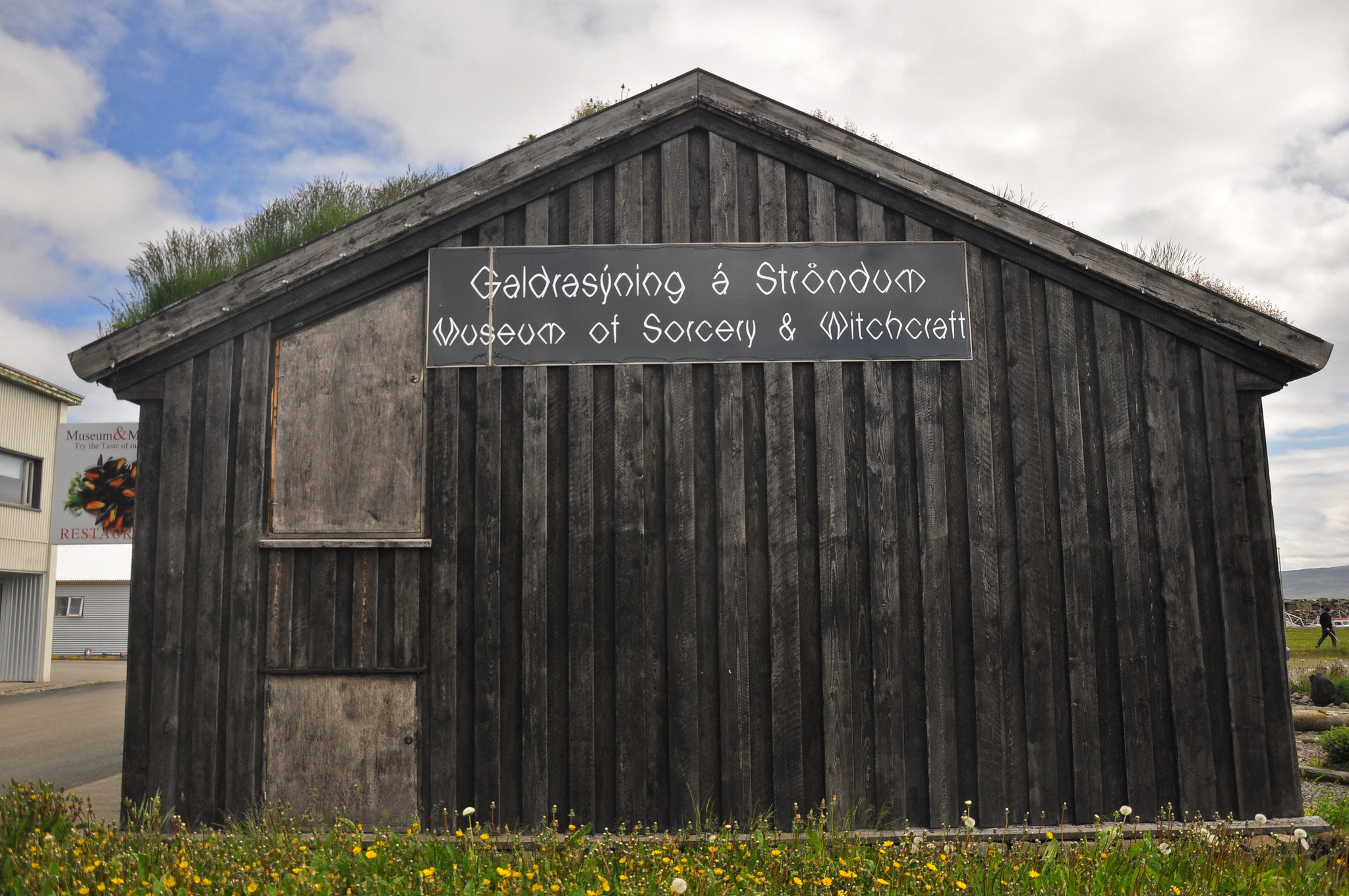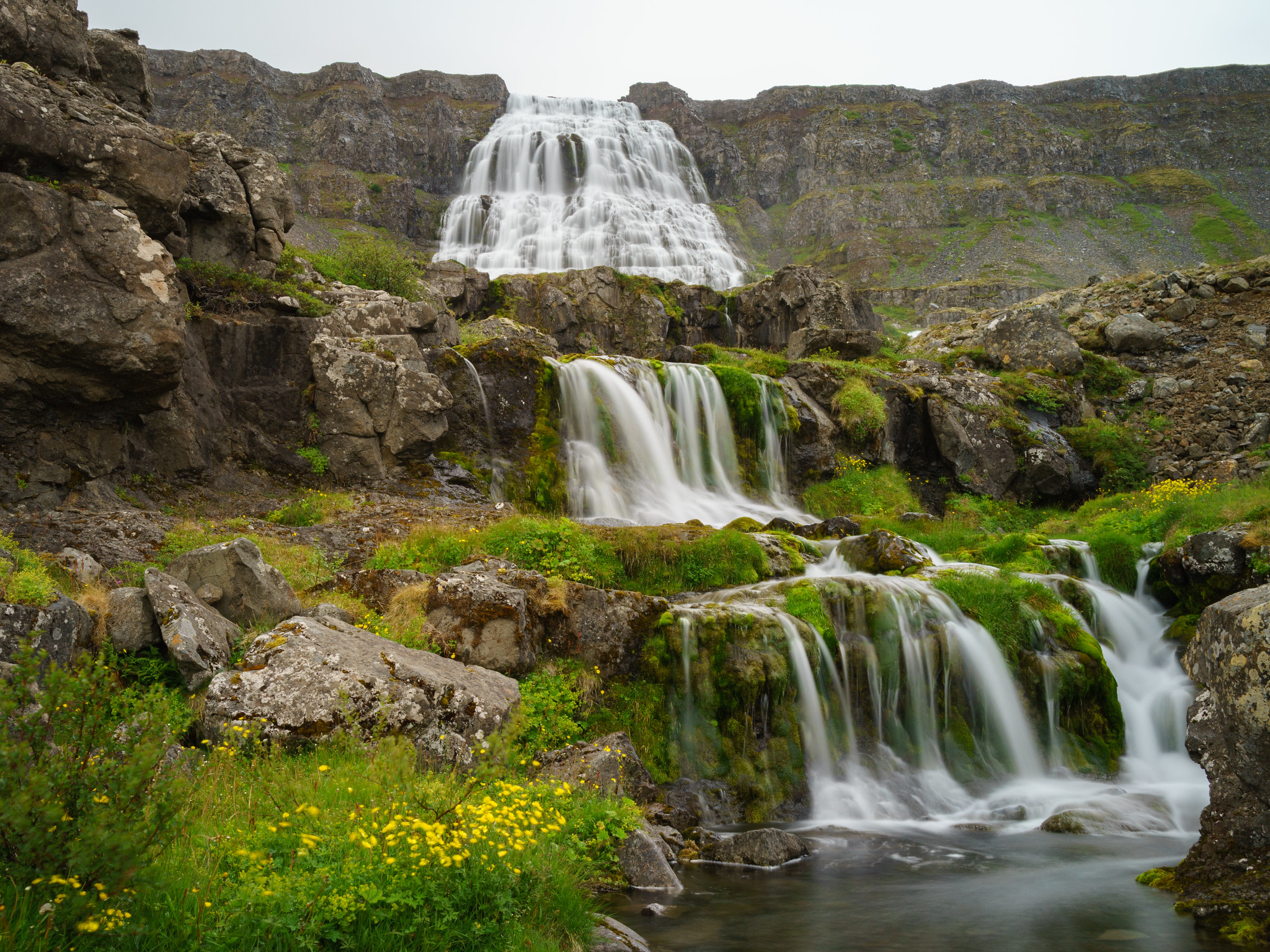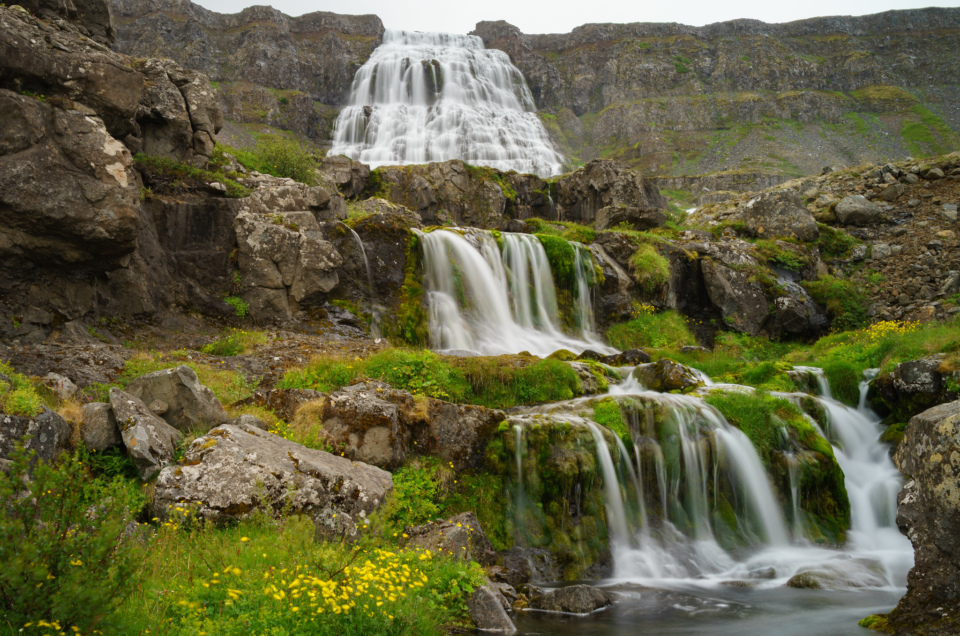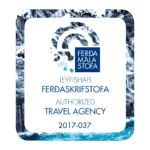The stunning northwestern portion of Iceland offers pristine remoteness. Imagine a peninsula connected to the rest of Iceland by a 7 km wide strip of land, and distant villages clinging to razor-cut fjords separated by mountainous terrain. With a landmass of 8,599 mi² (22,271 km²) and around 7,100 citizens, birds outnumber people many times over.
Lovers of the exceptional or quirky will find so much to adore. Rauðisandur is the wide beach with astonishing red sand. The Museum of Icelandic Sorcery and Witchcraft at Hólmavík showcases the region’s mystical past. Látrabjarg promontory is one of the foremost bird cliffs in Europe, where puffins dominate from May to September. Discover hot tubs in improbable places – all with views to die for – I so love these! Ísafjörður, the largest town, will impress you with its fishing heritage vibe, amenities and edge of the world quality.
My advice is to visit in summer and take your time – this region offers slow travel at its best. Although a day road trip from the capital to Hólmavík is very enjoyable, a weekend or longer stay in the Westfjords offers more possibilities. Ísafjörður is a 282 mi (454 km) journey from Reykjavík, which takes 5.5 hours in good conditions.
Roads to the towns of Ísafjörður and Hólmavík are good but they are not always traversable in winter. Some remote roads are closed all winter, and others are often impassable. Information on road conditions can be found here.
The Museum of Icelandic Sorcery and Witchcraft
See into the magical ways of 17th century farming folk in the region and what happened when witch persecution came to Iceland. Two unexpected facts – 17 of the 21 witches burned in Iceland hailed from the Westfjords and all but 1 were men. This region had long since been a bastion of magical traditions, indeed, the sagas only mention Strandir in relation to magic.

The museum carries out witchcraft-related research and the artifacts, information and publications tell a powerful story. The main museum and Galdur Restaurant are at Hólmavík harbor. A farmer’s cottage is also part of the museum, and this is situated at Bjarnarfjörður 15.5 mi (25 km) north of Hólmavík.
Open 10:00–18:00 daily in summer; 1st October to 14th May 12:00–18:00 on weekdays, and 13:00–18:00 at weekends. Entry fee: adults, 1100 ISK; students, 900 ISK; disabled, 800 ISK; under 14 years, free
Ísafjörður
The first recorded settler, Helgi Magri Hrólfsson, came in the 9th century, and a fishing village was established in the 16th century. Ísafjörður developed as a Danish trading post in the 18th century. Lovely wooden buildings constructed by the traders add charm to the town.

Old houses in Ísafjörður
Thoughts of Ísafjörður set my tastebuds tingling! I can testify that Tjöruhúsið thoroughly deserves its reputation as one of the best seafood restaurants anywhere. Exploring the majestic mountain and ocean scenery is sure to burn off some calories. Hiring a bike, hiking a trail, skiing, horseback riding, a kayak tour, or boat trips to the islands of Hesteyri or Vigur are among the options. When you are ready for a ‘re-fuel’, characterful cafés will welcome you.
With 2,600 people, Ísafjorður is crazily diverse. Visits to Ísafjörður Maritime Museum and Ísafjörður Culture House offer charming and fascinating insights into the folk history. Aldrei Fór Ég Suður (I Never Went South) is the annual Easter music festival created by Mugison and his father in 2004 – musicians come from far and wide.
Samúel Jónsson’s Art Museum
Samúel Jónsson’s life story is one of a creative soul, rural life and inspiring tenacity. Without any formal training, he became an accomplished painter, sculptor and woodcarver. Almost single-handedly, and eschewing most machinery, he even built a church to house an altarpiece he had created.
The museum is housed in the buildings and sculpture garden that were Samúel’s final projects at Selárdalur. Follow the unsurfaced track from Bíldudalur (Route 619).
Open May to October 24/7. Free entry but donations welcome – details on the website.
The Arctic Fox Center at Súðavík
Arctic foxes were the only indigenous land mammals when the settlers arrived in Iceland. Visit the foxes in the outdoor ‘sanctuary’, learn some interesting fox facts, and enjoy refreshments at the café. The center rescues orphaned foxes, carries out Arctic fox research and displays information. Monitoring the fox population in Hornstrandir Nature Reserve is an ongoing project.
Open from May to September inclusive. Check their Facebook page to get the latest opening updates.
Hornstrandir Nature Reserve
Although first inhabited in the 9th century, the last people left in the 1950s, leaving the area to foxes, mice, a plethora of birds and the spectacular nature. A reserve was established in 1975 to protect the wildlife and nature. The plant life is gloriously abundant and Arctic terns, fulmars, guillemots and puffins, among others, nest close to Hornvík, a stunningly beautiful bay. Off-grid and free of motor vehicles, the area has the aura of somewhere forgotten by time.
Visitors come to hike, birdwatch or to camp in the designated areas. Glamping at Hornvík offers greater comfort, and this can be arranged via Borea, the ferry company.
The ferry operates from Ísafjörður on Mondays and Saturdays at 09:00 AM in summer.
One-way ticket price: adults, 17,200 ISK; children 4 to 12, 50% discount; under 4 years old, free; senior citizens, 10% discount. The timetable can be seen here.
Three special hot tubs
My absolute favorite is the triplicate of tubs at the windswept fishing village of Drangsnes on Strandir. I even saw seals! Open all year, free, and with toilet and shower facilities across the road.
Krossneslaug is a hot tub and small geothermal swimming pool surrounded by wild nature at Norðurfjörður, 66 mi (106 km) north of Hólmavík, accessed by Route 643. Open mid-May to late August. Entry fee: adults, 700 ISK; children, 200 ISK. Showers/toilet facilities.
Reykjafjarðarlaug is a natural hot spring fed pool, surrounded by boulders and vegetation, where bathers enjoy unspoiled views of Arnarfjörður fjord. Swimmers will love the adjacent swimming pool. Situated roughly midway between Dynjandi and Látrabjarg on Route 63. Always open (road may be closed in winter). Free entry and basic changing hut without showers.
Rauðisandur Beach
Rauðisandur means the red sands, and this 6 mi (10 km) wide beach really does have red sand – the exotic coloration is derived from billions of crushed scallop shells. Visitors explore the beach, watch out for seals and whales, and enjoy the glorious vistas. You can sometimes see Snæfellsjökull Glacier on the horizon. The area is supremely peaceful but it has some dramatic history. In 1802, a legendary passion-fueled double murder was committed at Sjöunda, a local farm.
Follow Route 614 to the beach – this is a gravel track and you need to drive very carefully, especially on a few hairpin bends.
Látrabjarg Cliffs
The series of cliffs are a very impressive sight, rising to around 1443 ft (440 m) and extending over an amazing 8.7 mi (14 km). Látrabjarg has two major claims to fame: it is the westernmost point in Iceland and a bird cliff of global importance. 40% of the world’s razorbills nest on its steep precipices. Don’t worry, between May and August there are plenty of puffins, together with kittiwakes, gannets, terns, fulmars and guillemots too. Its value as a bird habitat gained the cliff protected status in May 2021.
Safety information: Keeping away from the cliff edges is important because these can give way. Route 612 connects Patreksfjörður to the Bjargtangi parking, this track is rough, so drive carefully.
Patreksfjörður
According to Landnámabók (The Book of Settlements), an Icelandic Saga, the first settler in the area was Örlygur Hrappson from the Hebrides, who named it after Bishop Patrick. Fishing took place from the earliest times but in the 18th century it expanded greatly, and the village established itself as a fish trading post – this was the first port to instigate trawler fishing in Iceland. Patreksfjörður is still a fishing village, but its natural beauty and proximity to Látrabjarg and Rauðisandur has encouraged tourism. Facilities include two hotels, guesthouses, cafés, a campsite and swimming pool. People enjoy walking and exploring, and hiking, boating and biking tours are offered locally. Sea Tours operates a car ferry to Stykkishólmur on Snæfellsnes – details here.
Dynjandi Waterfall
This highly unusual waterfall, with the shimmering cascade tumbling over ‘rippled steps’, is undoubtedly one of the Westfjords glittering jewels. The upper part of Dynjandi consists of seven waterfalls that merge, with a total drop of over 328 feet (100 m). The falls are 98 ft (30 m) wide at the top and they broaden to double that width at the bottom, making them totally unique. Dynjandi means thunderous, reflecting the bewitching cacophony that will surround you.

Hiking from the parking lot to Dynjandi is slightly uphill, taking around 15 minutes, the path to the top of the waterfall is steeper. Your hiking efforts will be rewarded with stunning photo opportunities. Dynjandi is located at Arnarfjörður, just off Route 60.
Valagil Waterfall
Witnessing Valagil Waterfall is well worth the 2.5 mi (4 km) round-trip hike through a beautiful valley. The falls sit within a deep and craggy ravine formed millions of years ago from layers of lava. You will see the waterfall from the parking lot, but getting closer will reveal its full splendor. Valagil is near the apex of Álftafjörður, 5.3 mi (8.5 km) from Súðavík, and the location can be seen here.
Djúpavík
This tiny village on the Strandir coast is one of the remotest settlements in the least populated municipality in Iceland. In an area of 301 mi2 (780 km2) there are just 53 people!

The view of Djúpivogur village
The ruined herring factory that dominates the town has been lovingly rescued and restored. A famous and characterful hotel and restaurant occupy part of the building. Guided tours of the herring factory showcase the industrial heritage of the Westfjords. Available daily from 10:00 – price: 2000 ISK. Djúpavík also has a small handicraft museum and gallery, Kört. More information about the gallery, hotel, restaurant and herring factory can be found here.
Djúpavík is a wonderful place to walk and there are various hiking trails. The village is reached via Route 643.
See you in Westfjords!
Written by Kay Tina Cook




